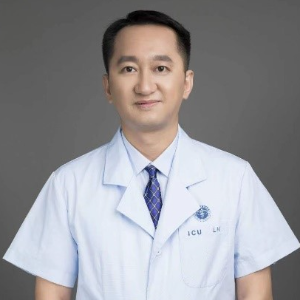Title : Experience and advice from single medical center: What we have learned from COVID-19 to unexplained serious pneumonia?
Abstract:
During the past four years, the people all over the world have been struggling with COVID-19 and other terrible infectious disease. Fortunately, we have accumulated amounts of clinical experience in the diagnosis and treatment of unexplained pneumonia from COVID-19 that was not be listed in the literature. The first serious COVID-19 patient with intubation in the Guangdong province, a case of severe ARDS with oxygenation index in 50, was successfully rescued in our ICU during the early outbreak stage in mid-January, 2020. Although we did not fully understand the terrible disease at that time, we had taken benefit treatment measures for unexplained pneumonia. And they have been consistently applied in clinical practice to this day.
Performing intubation and sending mNGS for inspection in severe hypoxemia associated with infection as soon as possible, can greatly shorten our diagnosis time in around 24 hours. Large dose of vitamin C (4–10 g/day) for the fulminant myocarditis and sepsis is required to alleviate oxidative stress. Acute exudative lesions or alveolar consolidation follows the subpleural pathway may be related to immune reaction which make methylprednisolone therapy in need. It also means the possible lesions of distal branches of pulmonary blood vessels. Hemoptysis, thrombosis in situ, acute pulmonary fibrosis like changes and pulmonary hypertension indicate that the pathogen has affected the pulmonary vascular endothelium.
Refractory hypoxemia is often a thorny problem that needs to be solved for unexplained pneumonia. Its treatment strategy not only includes prone ventilation and early CRRT but also includes continuous anticoagulation, reducing pulmonary hypertension and protection of alveolar epithelium and vascular endothelium. Nafamostat, as a new anticoagulant targeting immune thromboembolism has shown promising potential in alleviating acute fibrosis in some patients.
Audience Take Away:
- mNGS can quickly provide important clues for unknown infectious diseases.
- Corticosteroids, vitamins, and low molecular weight heparin have unique effects in unexplained pneumonia. They directly or indirectly protect the alveoli, myocardium, and pulmonary vascular endothelium, respectively.
- The lesions distribution of immune related unexplained pneumonia have their own characteristics. They may be distributed in the outer periphery of the lung field more than in the center.
- Stubborn hypoxemia caused by unexplained infections may imply simultaneous involvement of alveoli and pulmonary vessels.



